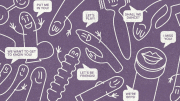Fans of the classic 1971 film, Willy Wonka & the Chocolate Factory, will recall that each of the children on the factory tour were enlisted by the conniving Mr. Slugworth to steal Wonka’s trade secrets. Until recently, something similar to this level of suspicion and corporate espionage was commonplace in the candy industry. Carol Off describes the chocolate industry in her book Bitter Chocolate as having “shifted from family-run enterprises to corporations and multinational conglomerates, and a fiercely competitive industry has consolidated into large monopolies and cartels.” Given this level of extreme competition, a recent deal to freely share the newly sequenced genome of the cacao tree is stunning.
On Sept. 15, the cacao tree, from which chocolate is ultimately derived, joined the swelled ranks of organisms with sequenced genomes. Two separate teams have been independently working on the project. One team is a joint effort by Mars Inc. (as in the Mars bar), the U.S. Department of Agriculture (USDA) and IBM. The other team is an international group of 20 different institutions in six countries.
Before going much further, let’s review the basics of chocolate production and what this new discovery could mean.
The cacao tree, Theobroma cacao, is a small tree native to the forests of Central and South America. It flowers and fruits year round, producing large melon shaped berries called cacao pods. Cacao is the name of the tree, and cocoa is what the processed product from the trees is called. Producing 900 grams of cocoa requires 20-25 pods with each pod containing 20-40 almond-shaped cacao beans. The beans are removed and allowed to ferment and slowly dry, giving it its chocolaty flavour and aroma. Once dried they are roasted, shelled and ground to produce cocoa liquor which is then pressed to extract the fat-rich cocoa butter and the bitter cocoa powder. Chocolate is made by blending the cocoa liquor with extra cocoa butter, this produces unsweetened baker’s chocolate, which used in cooking.
Commercial cultivation of the cacao tree is done mostly in West Africa, with 70 per cent of the world’s cocoa supply coming from the region. Cote d’Ivoire is the largest producer followed by Ghana.
The World Cocoa Foundation estimates that about 50 million people rely on cocoa farming for their livelihood. Brazil was once one of the world’s top producers until the late 1980s when a fungal disease known as witches’ broom struck the nation’s industry. In fact, the cacao is vulnerable to a number of fungal pests such as the black pod (caused by Phytophthora spp.), frosty pod rot (caused by Moniliophthora rorei) and vascular streak dieback (caused by Oncobasidium theobromae). It is estimated that every year farmers lose between US$700-800 million due to pest and disease. It is hoped that the newly sequenced genome may be able to give some hope to farmers currently battling these diseases.
The cacao tree genome consists of 10 chromosomes, and the rough genome map made public by the USDA/Mars team consists of about 400 million “letters” of code. While much work remains to be done, the team has identified certain gene families that are linked to cocoa flavour and disease resistance. The hope is that identifying specific genes linked with favourable traits will make breeding new strains of the tree simpler. Increased disease resistance or pod yield would mean a world of difference for farmers.
Perhaps the most interesting part of this whole story is that the USDA/Mars team has made their preliminary genome map freely available to the public at cacaogenomedb.org. The copyrighting of genes is a contentious issue at the moment and such a step is remarkably socially conscious. The second team working on the genome, the international consortium, is currently waiting for peer review before they move forward with their plan to also publish a draft of the genome.
While sequencing the genome is an important first step, one should not raise their expectations too high. This will be a valuable tool in improving cacao crops but much more traditional breeding work must be done before its effects are seen by the consumer. With that caveat in mind, let’s hope this is the beginning of a new era of chocolate that Wonka himself couldn’t imagine.




